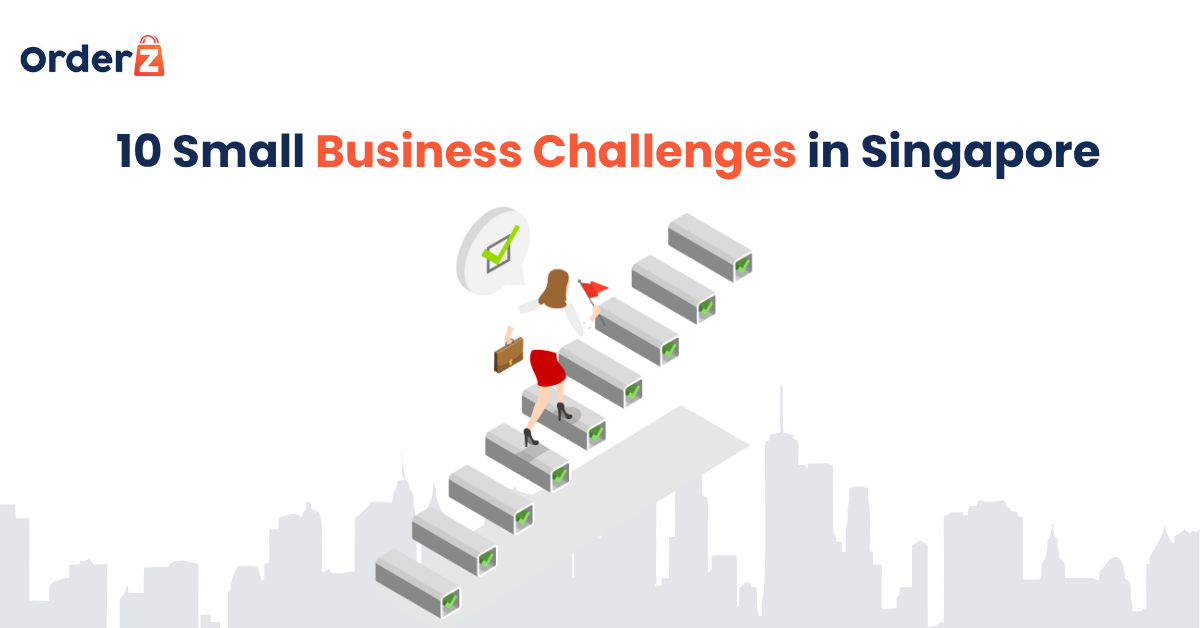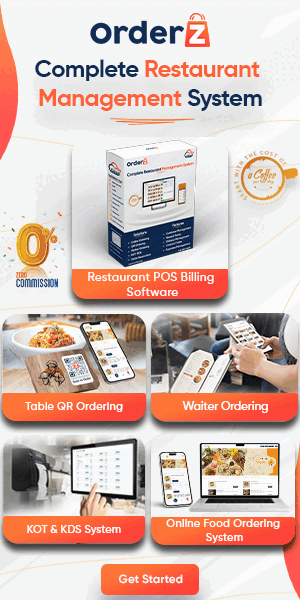Small businesses are the backbone of Singapore’s economy, contributing to more than half of its GDP and employing about 70% of its workforce. They span diverse sectors, such as manufacturing, retail, food and beverage, services, and technology.
However, running a small business in Singapore is not without its challenges. In this blog, we will explore the top 10 challenges faced by small businesses in Singapore and how they can overcome them.
Top 10 Small Business Challenges in Singapore
Regulatory and Compliance Hurdles

Singapore is known for its business-friendly environment, ranking second in the world for ease of doing business. However, it also has a complex regulatory environment that requires small businesses to comply with various rules and regulations. These include tax laws, labor laws, environmental laws, consumer protection laws, and industry-specific regulations. Moreover, these policies can change frequently, making it hard for small businesses to keep up with the latest requirements.
To navigate the regulatory and compliance hurdles, small businesses need to be aware of the relevant laws and regulations that apply to their industry and operations. They can consult with professional advisors or use online resources such as [BizFile+], [ACRA], [IRAS], and [Enterprise Singapore] to get updated information and guidance. They can also apply for licenses and permits online through [GoBusiness Licensing], which simplifies the application process and reduces the processing time.
High Operating Costs

Another major challenge faced by small businesses in Singapore is the high operating costs. One of the biggest expenses is real estate and rental prices, which are among the highest in the world. According to a report by Knight Frank, the average prime office rent in Singapore was S$11.15 per sq ft per month in 2020. For retail space, the average rent was S$31.40 per sq ft per month in 2020.
Another significant expense is labor costs, which have been rising due to the tight labor market and the increasing demand for skilled workers. According to the Ministry of Manpower, the median monthly income of full-time employed residents in Singapore was S$4,534 in 2020. Additionally, employers have to pay for mandatory contributions such as CPF, SDL, FWL, and SHG.
These high operating costs have an impact on the pricing strategies and competitiveness of small businesses. To cope with the high operating costs, small businesses need to optimize their operations and reduce unnecessary expenses. They can also explore alternative options such as co-working spaces, virtual offices, outsourcing, automation, and cloud computing.
Limited Market Size

Singapore is a small country with a population of about 5.7 million people. This means that its domestic market size is limited and may not offer enough opportunities for growth and expansion for small businesses. Moreover, Singapore is highly dependent on international trade, which exposes it to external risks such as trade disputes, currency fluctuations, and global economic slowdowns.
To overcome the challenge of limited market size, small businesses need to look beyond their local market and explore regional and global markets. They can leverage Singapore’s strong trade network and free trade agreements to access new markets and customers. They can also use digital platforms such as e-commerce websites, social media channels, and online marketplaces to reach a wider audience and increase their brand awareness.
Intense Competition

Singapore is a highly competitive market with many players vying for customers’ attention and loyalty. Small businesses have to compete not only with other local businesses but also with larger competitors from overseas. Some of these competitors may have more resources, experience, and economies of scale that give them an edge over small businesses.
To survive and thrive in the intense competition, small businesses need to develop unique value propositions that differentiate them from their competitors. They need to understand their target market’s needs, preferences, and pain points and offer solutions that address them effectively. They also need to constantly innovate and improve their products and services to stay ahead of the curve.
Skilled Labor Shortage

One of the key challenges faced by small businesses in Singapore is finding and retaining skilled talent. Due to the limited pool of local talent and the strict immigration policies, small businesses may face difficulties in hiring qualified workers for their operations. Furthermore, they may face skill gaps in areas such as digital marketing, data analytics, cybersecurity, and artificial intelligence.
To address the skilled labor shortage, small businesses need to invest in training and upskilling their existing workforce to enhance their capabilities and productivity. They can also tap into various government schemes such as [SkillsFuture], [Workforce Singapore], [Enterprise Development Grant], and [Productivity Solutions Grant] to access funding and support for training and development. Additionally, they can leverage online platforms such as [LinkedIn], [JobStreet], and [Glance] to attract and recruit talent.
Digital Transformation

Digital transformation is the process of using digital technologies to create new or modify existing business processes, products, and customer experiences. It is essential for small businesses to embrace digital transformation to stay relevant and competitive in the digital age.
However, many small businesses may face challenges in adopting and integrating digital technologies into their operations. These challenges include lack of digital literacy, resistance to change, budget constraints, and cybersecurity risks.
To overcome the challenges of digital transformation, small businesses need to adopt a digital mindset and culture that encourages innovation and experimentation. They also need to identify their digital goals and priorities and align them with their business objectives and strategies.
They can also seek guidance and assistance from various government initiatives such as [SMEs Go Digital], [Digital Resilience Bonus], [Start Digital Pack], and [SME Centres] to access digital solutions, funding, and advisory services.
Access to Funding

Funding is crucial for small businesses to start, grow, and sustain their operations. However, many small businesses may face difficulties in accessing funding from traditional sources such as banks and financial institutions. This is because they may lack collateral, credit history, or financial records that are required for loan approval. Moreover, they may face high-interest rates, stringent repayment terms, and long processing times.
To overcome the challenge of access to funding, small businesses need to explore alternative funding options such as crowdfunding, angel investing, venture capital, and peer-to-peer lending. These options may offer more flexibility, convenience, and speed than conventional loans.
They can also take advantage of various government grants and support schemes such as [Enterprise Financing Scheme], [Temporary Bridging Loan Programme], [SME Working Capital Loan], and [SME Micro Loan] to access low-interest loans with longer repayment periods.
Changing Consumer Behavior

Consumer behaviour refers to the way consumers make decisions about what they buy, how they buy when they buy, and why they buy. Consumer behavior is influenced by various factors such as personal preferences, social influences, cultural values, economic conditions, and technological trends. Consumer behavior is constantly changing and evolving in response to these factors.
Small businesses need to keep up with the changing consumer behaviour to meet their customers’ expectations and demands. They need to conduct market research and customer feedback surveys to understand their customers’ needs, wants, and pain points. They also need to adapt their marketing strategies accordingly to communicate their value proposition effectively and persuasively.
Economic Uncertainties

Economic uncertainties refer to the unpredictable fluctuations in the global and regional economic conditions that affect the business environment. Economic uncertainties can arise from various sources such as political instability, trade wars, natural disasters, pandemics, and cyberattacks. Economic uncertainties can have negative impacts on small businesses such as reduced consumer spending, disrupted supply chains, increased operating costs, and lower profitability.
To cope with the economic uncertainties, small businesses need to mitigate their risks and plan for contingencies. They need to monitor the economic trends and indicators and adjust their business plans and budgets accordingly. They also need to build resilience and diversification strategies such as expanding into new markets, developing new products or services, or collaborating with other businesses.
Conclusion
Small businesses in Singapore face many challenges that can affect their performance and survival. However, these challenges can also be opportunities for growth and improvement if they are handled well.
Small businesses need to be proactive and seek support from various sources such as government agencies, industry associations, professional advisors, and online platforms. By doing so, they can overcome the challenges and achieve their business goals.
FAQs
What are the main challenges small businesses face in Singapore?
Small businesses in Singapore often encounter challenges such as high operating costs, regulatory complexities, intense competition, difficulty in accessing funding, and adapting to digital transformation.
How can small businesses navigate the regulatory environment in Singapore?
Navigating the complex regulatory environment in Singapore involves staying updated on policy changes, understanding licensing requirements, and seeking professional advice to ensure compliance.
What options do small businesses have for funding in Singapore?
Small businesses in Singapore can explore options like bank loans, government grants, venture capital, angel investors, and crowdfunding to secure funding for their operations and growth.
How can small businesses embrace digital transformation?
Small businesses can embrace digital transformation by creating an online presence, adopting e-commerce platforms, leveraging social media marketing, and investing in technology to streamline operations and enhance customer experience.
What strategies can small businesses use to stand out in a competitive market?
To stand out in a competitive market, small businesses can focus on creating unique value propositions, offering personalized customer experiences, differentiating through quality or innovation, and effectively communicating their brand story.
How can small businesses in Singapore address the skilled labor shortage? Small businesses can address the skilled labor shortage by offering competitive compensation packages, providing opportunities for training and upskilling, collaborating with educational institutions, and creating a positive and inclusive work environment that attracts and retains talented individuals.




